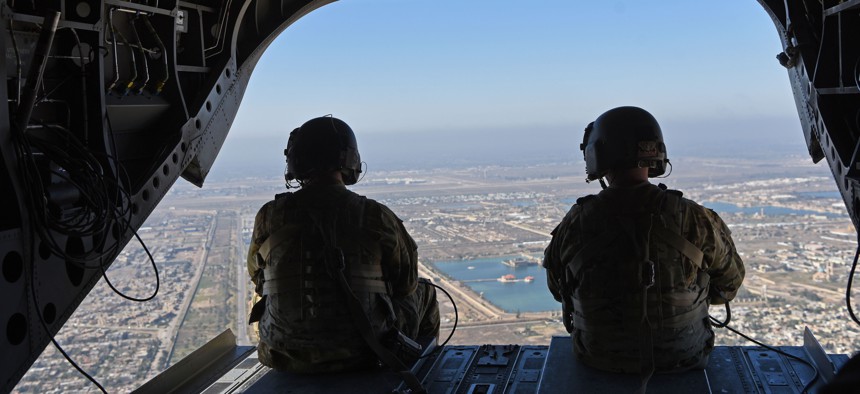The Combat Mission in Iraq Has Ended. But Troops Aren’t Coming Home
Train-advise-assist will continue, Pentagon says, with no force cuts planned.
The Iraqi government announced Thursday that U.S. forces had officially ended their combat mission in Iraq, a formality that is not expected to shrink the U.S. presence there nor much change what the troops do.
“There's no significant posture change in Iraq right now. The numbers are still where they were, which is about 2,500. Remember, this is a change in the mission, right? Not necessarily a changing physical posture,” Pentagon press secretary John Kirby said Thursday.
U.S. forces invaded Iraq in 2003, withdrew in 2011, and returned in 2014 to help rebuild the Iraqi Army and fight the Islamic State. For a number of years now, Kirby said, they have been in an advise-and-assist role, helping Iraqi forces to clear out remaining pockets of ISIS.
In April, U.S. and Iraqi officials agreed to talk about bringing the U.S. combat mission to an end. In June, U.S. forces launched an independent attack against Iranian-backed militias inside Iraq near the Syrian border. Those strikes drew sharp criticism from some Iraqi parliament members, who accused the U.S. of violating Iraqi sovereignty. In July, President Joe Biden and Iraqi Prime Minister Mustafa al-Kadhimi officially agreed that the combat mission would end by year’s end.
Little is expected to change when it does, Kirby said.
“We have been making this transition for quite some time, it's not like, you know, today they snapped a chalk line and, you know, all of a sudden, there's a massive change in the daily operations of our men and women over there,” Kirby said.




